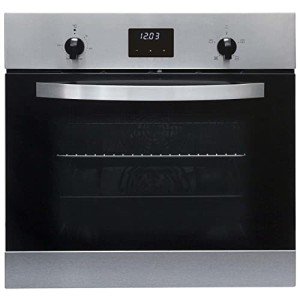The Essential Guide to Oven Hobs: Selecting the Right One for Your Kitchen
When it concerns home cooking, few home appliances are as important as the oven hob. This flexible piece of equipment is necessary for a variety of cooking approaches-- boiling, frying, simmering, and sautéing. Offered the myriad of options readily available on the marketplace, selecting the ideal oven hob for one's kitchen can be intimidating. This short article intends to provide an extensive take a look at oven hobs, discussing their types, performances, benefits, drawbacks, and essential considerations when purchasing one.
Comprehending Oven Hobs
Oven hobs, typically understood as cooktops, are flat cooking platforms that feature burners or heating elements. They can be integrated with an oven or stand-alone. The option of an oven hob can considerably affect cooking efficiency and benefit.
Kinds Of Oven Hobs
Oven hobs are available in different types, each with special functions. Below are the most common types offered:
| Type | Description | Advantages | Disadvantages |
|---|---|---|---|
| Gas Hobs | Utilizes natural gas or propane | Immediate heat and precise temperature level control; works well with all cookware | Requires a gas connection; less energy-efficient than electric |
| Electric Hobs | Use electric coils or glowing heat | Easy to clean; constant heat distribution | Slower to warm up; can be less responsive than gas |
| Induction Hobs | Makes use of electromagnetic fields to heat cookware directly | Quick cooking; energy-efficient; simple to tidy | Requires compatible cookware; typically more pricey |
| Ceramic Hobs | Flat glass-ceramic surface with radiant heat | Visually pleasing; easy to clean | Can be prone to scratching; slower to heat than induction |
Secret Features of Oven Hobs
When choosing an oven hob, numerous functions need to be taken into consideration:
- Size & & Configuration: Available in various sizes, oven hobs can accommodate numerous pots and pans. Standard alternatives are normally 30, 36, or 48 inches large.
- Power Output: Look for hobs with varying power levels for various cooking processes. High-powered burners are exceptional for boiling, while lower-power ones can be used for simmering.
- Control Types: Choose between knob controls and touch controls. click the following internet page offer tactile feedback, while touch controls provide smooth styles and additional functionalities.
- Safety Features: Options like automatic shut-off, kid locks, and flame failure devices are crucial for preventing mishaps.
- Ease of Cleaning: Choose models with smooth surface areas or detachable parts for easy maintenance.
Advantages and Disadvantages
Comprehending the advantages and disadvantages of different oven hobs can help in making an informed decision.
Benefits
- Flexibility: Suitable for various cooking approaches, from boiling to frying.
- Speed: Many hobs heat quickly, especially induction models.
- Energy Efficiency: Some choices, like induction hobs, can minimize energy consumption compared to traditional techniques.
Downsides
- Expense: High-end models, particularly induction hobs, can be expensive.
- Installation: Gas hobs need expert installation and a gas supply, which might incur additional expenses.
- Compatibility: Not all cookware deals with induction hobs, demanding additional purchases.
Buying Considerations
When picking an oven hob, think about the list below elements:
- Cooking Style: Assess how often and what sort of cooking you do to identify the best hob type.
- Kitchen Layout: Measure your kitchen space to make sure the hob fits and matches other devices.
- Budget plan: Determine just how much you want to spend. Aspect in setup and the expense of any necessary pots and pans.
- Energy Source: Evaluate the availability of natural gas or the electrical capacity of your kitchen to choose in between gas and electric choices.
FAQs About Oven Hobs
Q1: What is the distinction in between a cooktop and an oven hob?A cooktop and an oven hob typically refer to the very same appliance. However,"cooktop "is a broader term that includes both standalone hobs and integrated systems with ovens. Q2: Can I use any pots and pans on an induction
hob?No, induction hobs need ferrous( magnetic)cookware
to work. Pots and pans made of material like stainless-steel or cast iron appropriates, while aluminum and copper without magnetic residential or commercial properties are not. Q3: How do I tidy my oven hob properly?Cleaning techniques depend upon the kind of hob.
Normally, a damp fabric and moderate cleaning agent work for glass-ceramic surface areas, while a specific hob cleaner is ideal for induction. Gas hobs need dismantling burners for thorough cleaning. Q4: Are induction hobs safe for cooking?Yes, induction hobs are normally much safer than gas hobs as they do not produce an open flame,and the surface cools off quickly. Many models also include kid security locks. Q5: How frequently should I replace my oven hob?The life expectancy of an oven hob varies based upon the type and use. Normally, they last around 10 to 15 years.
Regular upkeep can assist extend this period. Picking the perfect oven hob for your home can significantly enhance your cooking experience. With a thorough understanding of the types, functions, advantages, and factors to consider, anyone can make an informed choice. From the high heat of gas to the efficiency of induction, there is a hob matched to every culinary need. Ultimately, the ideal oven hob can change cooking from an ordinary job into an art kind, making it possible for culinary lovers to produce tasty meals with ease.

